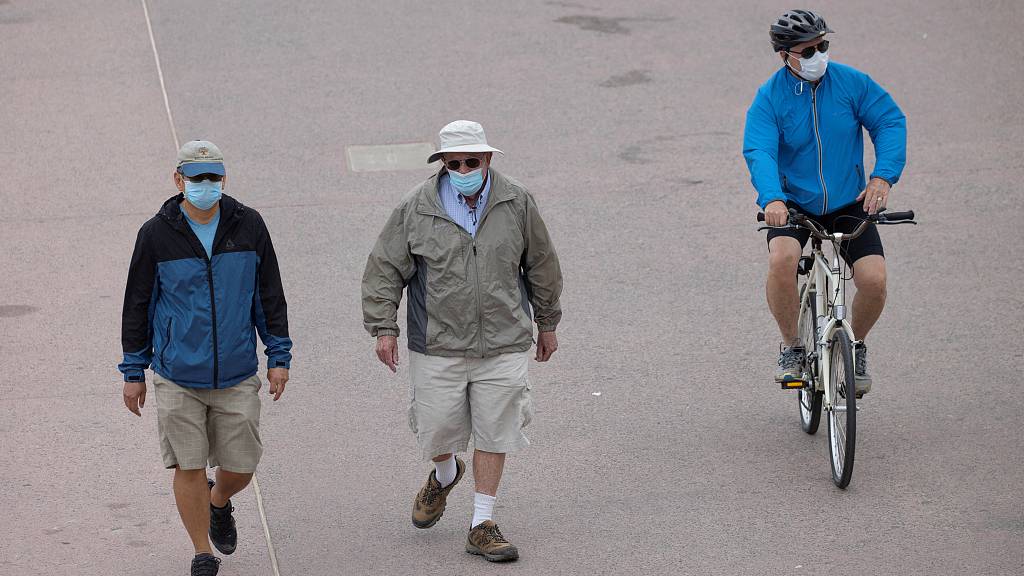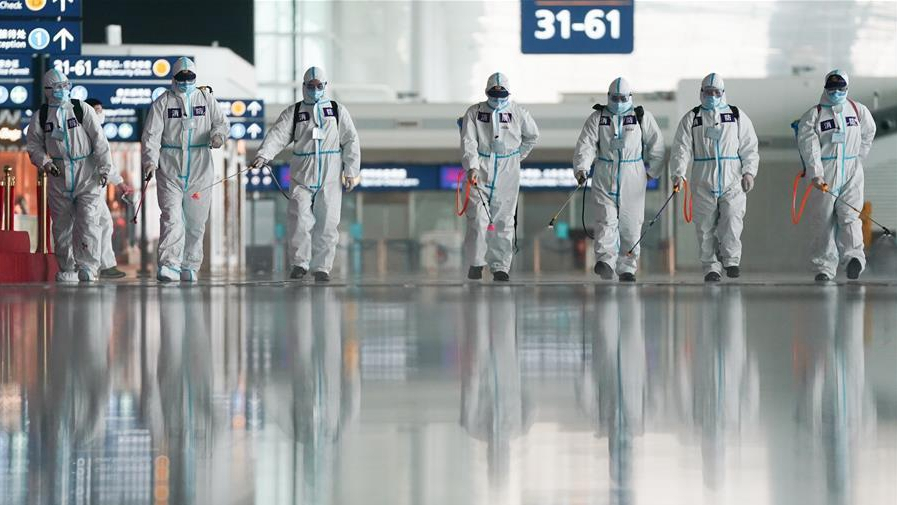
Visitors wear face masks on the boardwalk in Huntington Beach, California, U.S., July 1, 2020. /VCG
Visitors wear face masks on the boardwalk in Huntington Beach, California, U.S., July 1, 2020. /VCG
Editor's note: John Gong is a professor at the University of International Business and Economics (UIBE) and a research fellow at the Academy of China Open Economy Studies at UIBE. The article reflects the author's opinions and not necessarily the views of CGTN.
After losing over 600,000 lives, the United States has finally made to the No. 1 spot in the world in terms of combating COVID-19, according to Bloomberg's latest pandemic resilience ranking in June, which is a comprehensive index Bloomberg has come up with to measure some 50 countries' "success at containing the virus with the least amount of social and economic disruption." China was ranked only 8th in the same study.
This comparison between China and the U.S. in the eyes of Bloomberg is mind-boggling to a lot of people. After a year-and-a-half into the COVID-19 era, no matter how one measures it, the success at containing the virus ultimately has to be boiled down to how many lives were saved. In China, the casualty rate is a bit over 4,000 so far. In the U.S., it is over 600,000. So how come one with 150 times more deaths is ahead by 7 positions, not to mention that China has a population that is four times larger?
The intellectual curiosity in me leads to digging deeper into this index composition for a clue. The index consists of three groups of sub-indices, the data of which are acquired from various third- party sources. So it appears to be something that is not fabricated in an office somewhere in Bloomberg's global network of many offices. These three groups include variables to characterize: 1) Reopening; 2) COVID-19 status; and 3) Quality of life.
The reopening group includes four variables: vaccination rate, lockdown severity and two other variables characterizing flight recovery. It is pretty obvious that here China takes a hit relative to the U.S. in all of these variables. The U.S. vaccination rate is indeed high, thanks to Biden's strong campaign. It doesn't implement the kind of restrictive lockdown measures as in China whenever new cases are discovered. And it also gains points for the number of open international travel routes for vaccinated passengers, as Europe recognizes the three vaccines from the U.S. but not China's.

Firefighters conduct disinfection at Terminal 3 of Wuhan Tianhe International Airport in Wuhan, central China's Hubei Province, April 3, 2020. /Xinhua
Firefighters conduct disinfection at Terminal 3 of Wuhan Tianhe International Airport in Wuhan, central China's Hubei Province, April 3, 2020. /Xinhua
COVID status is a very objective measure consisting of several variables like positive test rates, new cases per 100,000 people and fatality rates. I am pretty sure China beats the U.S. hands down in this category.
The final, quality of life category consists of three variables: GDP growth forecast, universal healthcare coverage, and the United Nations' Human Development index. The matchup between China and the U.S. is probably a mixed bag, with China beating the U.S. in GDP growth, losing in Human Development index and probably neck-to-neck in healthcare coverage.
But my grudge against Bloomberg in this regard lies in the inclusion of the Human Development index basically measuring national income, education and healthcare among other things on a per capita basis, for which the U.S. leads by leaps and bounds anyway. But why does this have anything to do with the COVID management issue?
But regardless, Bloomberg's final calculation delivers a verdict that puts the U.S. on top. But my biggest criticism of this index is that the methodology is fundamentally flawed in that the two objectives for the study in the first place, namely "containing the virus" and "least amount of social and economic disruption" can be inherently contradictory.
Borrowing from Patrick Henry, these two objectives might be considered in the context of basically choosing between liberty and death. Containing the virus means saving lives. Least amount of social and economic disruption, well, in the U.S., they call it personal liberty. But at least as far as I am concerned, please, give me life, and I give you back liberty any day.
The latest statistics on July 12 in the U.S. show an average of over 22,000 new cases nationwide, which represents a 94-percent increase on a scale of 14-day change.
(If you want to contribute and have specific expertise, please contact us at opinions@cgtn.com.)

